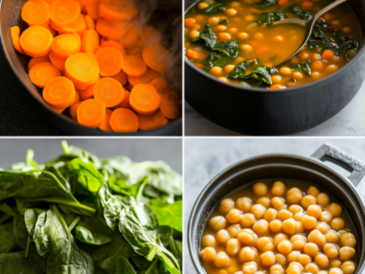The USDA Plant Hardiness Zones help gardeners across the U.S. determine the best planting times for different vegetables based on their specific climate. Here’s a detailed guide to when to plant each vegetable according to various zones, ensuring optimal growing conditions for each crop.
Tomatoes
- Zones 3-4: Start indoors in April, transplant in late May to June.
- Zones 5-7: Plant in May to June after the last frost.
- Zones 8-10: Plant from February to March, or September to October (second season).
Onions
- Zones 3-4: Start indoors in late March, transplant in April.
- Zones 5-7: Direct sow from March to April.
- Zones 8-10: Direct sow from February to March or late summer (August to September).
Peppers
- Zones 3-4: Start indoors in April, transplant in June.
- Zones 5-7: Plant in May to June after the last frost.
- Zones 8-10: Plant from February to March or September to October.
Squash (Summer and Winter)
- Zones 3-4: Direct sow from May to June (summer squash), July to August (winter squash).
- Zones 5-7: Direct sow from May to June (summer squash), July to August (winter squash).
- Zones 8-10: Plant from February to March (summer squash), August to September (winter squash).
Carrots
- Zones 3-4: Direct sow from April to May or August for a fall harvest.
- Zones 5-7: Direct sow from March to April or late summer (August to September).
- Zones 8-10: Direct sow from February to March or September to November.
Broccoli
- Zones 3-4: Start indoors in March to April, transplant in May, or plant again in late July for fall.
- Zones 5-7: Start indoors in March to April or August to September for fall.
- Zones 8-10: Plant from February to March or September to October.
Cucumbers
- Zones 3-4: Direct sow from June to July after the last frost.
- Zones 5-7: Direct sow from May to June after the last frost.
- Zones 8-10: Plant from March to April or September for a second harvest.
Lettuce
- Zones 3-4: Direct sow from May to June or August for a fall harvest.
- Zones 5-7: Plant from March to April or September to October.
- Zones 8-10: Plant from February to March or October to November.
Beans
- Zones 3-4: Direct sow from June to July after the last frost.
- Zones 5-7: Direct sow from May to June.
- Zones 8-10: Plant from February to March or August to September for a second season.
Radishes
- Zones 3-4: Direct sow from April to May or August for fall.
- Zones 5-7: Direct sow from March to April or August to September.
- Zones 8-10: Plant from February to March or September to November.
Beets
- Zones 3-4: Direct sow from April to May or late summer (August) for fall.
- Zones 5-7: Direct sow from March to April or August to September.
- Zones 8-10: Plant from February to March or September to November.
Tips for Different Zones:
- Cooler Zones (Zones 3-4): These zones have shorter growing seasons. It’s often necessary to start seeds indoors and transplant after the last frost. Choose fast-maturing varieties to ensure a full harvest.
- Mild Zones (Zones 5-7): With moderate climates, these zones enjoy a longer growing season. You can plant most vegetables directly in the ground after the last frost and even grow two cycles of crops, especially cool-season crops like broccoli and lettuce.
- Warm Zones (Zones 8-10): These zones have long growing seasons and allow for year-round gardening. Many vegetables can be planted twice a year (spring and fall). However, you may need to provide shade for heat-sensitive crops like lettuce in the summer.
With careful planning based on your zone, you can ensure your vegetable garden thrives and yields the best results.




